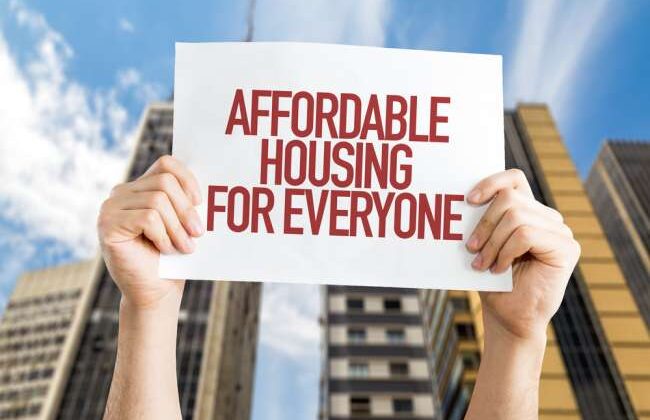
Affordable Housing is Keeping India’s Real Estate Afloat
Government initiatives, low home loan interest rates, and discounts are driving the segment.
Insufficient housing is a global problem. Statistics show dismal figures: one in five people suffer from inadequate housing, and a mere 13 percent of cities offer affordable housing options globally. While the housing situation in India is no different, real estate developers and the Indian government have turned their focus on affordable housing projects, which have begun to reverse the trend of insufficient housing in India— slowly, but surely.
The pandemic, too, has played an important role in fueling demand for affordable homes. Before the pandemic, 31 percent of India’s urban population lived on rent, and a large chunk of this segment now aspires to have a house of their own.
After the first wave, companies gave their employees the flexibility to work from home, which resulted in many people rushing to their hometowns. After the second wave, with hybrid work models being toyed with, people are keen on finding a house of their own. Low interest rates offered by banks are another factor that is aiding this trend.
India has a massive population that is spread across urban and rural areas. To meet the demand for affordable housing, many initiatives have been launched in the past few years.
Housing for All Mission, 2015
Launched in 2015, the Housing for All Mission is the Government of India’s initiative to create affordable housing spaces for the economically backward living in urban zones. Under it, the government aims to provide two crore affordable homes to the urban poor by the end of March 2022.
To sweeten the deal and make it easier to achieve the goal, the government is offering several subsidies. One of these is a reduction in GST rates for affordable housing. For homes priced below Rs 45 lakh, the applicable GST rates have been reduced from 8 percent to 1 percent.
Pradhan Mantri Awas Yojana, 2015
Better known as PMAY, the Pradhan Mantri Awas Yojana was also launched in 2015 under the Housing for All Mission. To achieve adequate and affordable housing for the urban poor, this credit-linked subsidy scheme offers an interest subsidy to those applying for a home loan under PMAY.
- PMAY-U, or Pradhan Mantri Awas Yojana Urban, covers more than 4,331 cities and towns. Affordable Rental Housing Complexes (ARHC) are part of this initiative, catering to migrants living in urban areas and working in informal sector industries.
- PMAY-G, or Pradhan Mantri Awas Yojana Gramin, used to be Indira Awas Yojana till it was renamed in 2016. Under it, a whopping 1,031,01,107 homes have already been sanctioned in rural areas.
Special Window for Affordable and Mid-Income Housing Investment, 2019
SWAMIH, or Special Window for Affordable and Mid-Income Housing Investment, was launched by the Centre in 2019. Under this investment fund, a handsome sum of Rs 25,000 crore was earmarked to finish stalled RERA mid-income and affordable housing developments. The SWAMIH investment fund is directed at completing the construction of more than 1,500 projects with over 4.5 lakh stalled homes across the country. Non-performing and insolvent assets receive funding on a LIFO (Last In, First Out) basis under the SWAMIH fund.
While government initiatives are driving attention to the affordable housing segment, real estate developers are also responsible for making sure that over 80 percent of new housing development launches in 2020 are firmly in the affordable segment. These initiatives, along with reduced interest rates on home loans and attractive discounts offered by developers, are turning the global dream of affordable housing into a reality in India.
Image Courtesy : Outlook Money


